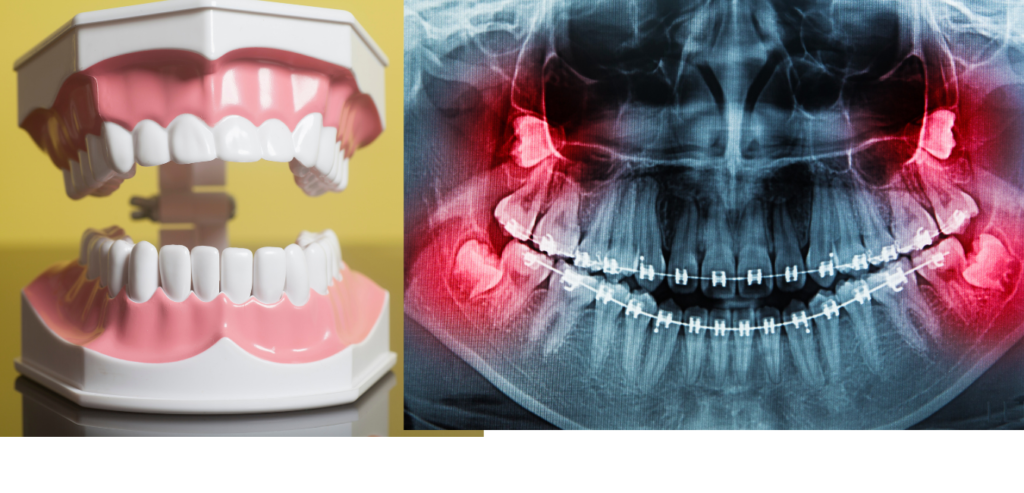Human Teeth Anatomy, Types, Diagram, Names, Number
The human body survives on energy that is derived from the food we eat. Amongst many of the organs that are important for the digestion of this food into smaller particles, our teeth are the first ones in order.
Teeth are calcified appendages that are fixed in our upper and lower jaw. Two sets of teeth are formed in a human life span. The first set is seen in babies of around 6 months to adolescents of up to 7 years. This first set is also known as the deciduous teeth.
The first generation of the teeth is replaced by the second generation of permanent teeth. Primary and permanent teeth are ten and thirty-two in number respectively. Apart from chewing and crushing the food, our teeth are also necessary for talking as it helps in word-formation.

Several teeth conditions are very common in every other person. From oral cavities, tooth decay, and periodontitis, many dental conditions are primarily caused due to bad oral hygiene.
Types of teeth: Teeth Anatomy
Replacement of the primary generation of teeth or the deciduous teeth takes place at the age of seven to ten. By the age of twelve to thirteen, the full set of permanent teeth is formed. There are 16 rows of teeth in the upper jaw or the maxilla and likewise 16 sets of teeth in the lower jaw, the mandible.
In some people, there are extra sets of four teeth called wisdom teeth that grow at the back of their mouth. This set usually grows at the age of seventeen to twenty-five.
There are four basic types of tooth:
- Incisors – eight; four sets in the maxilla and four in the mandible.
- Canine. – four; two sets in maxilla and two in mandible.
- Premolars – eight; four sets in the maxilla and four in the mandible.
- Molars – eight; four sets in the maxilla and four in mandible.
The incisors are chisel-shaped and are the ones present in the front of our mouth. They are specialized to cut and tearing food. In the permanent generation, there are eight incisors (four on the upper jaw and four on the lower jaw).
The canines are pointed teeth and in regards to the position are right next to our incisors. They are also responsible for grasping and cutting the food. There is a total of 4 canines ( 2 on both the upper and lower jaw).
Next to the canines are the premolars. These arise from the primary molars. Pre molars are important for crushing and chewing the food. There is a total of eight premolars.
The last set of our teeth are the molars. They are very important for proper grinding and chewing of the food. Molars are usually most susceptible to cavities as they are the most frequently used set of teeth.
There is a total of eight molars in the permanent set of teeth.
The final set of teeth that are seen in most people are the wisdom teeth. They grow at the back of the mouth and are usually surgically removed to avoid the displacement of other teeth.
Structure: Teeth Anatomy
Human teeth are the hardest structures in the whole body. They are hardened by the calcification of calcium phosphate which is a rock-hard mineral. These hard structures sit in special soft coverings called the gingiva also commonly known as the gum.
A tooth is divided into two areas,
- Dental crown area
- Tooth root area
The dental crown area is the area the is projected in our mouth. It is either pointy, chisel-shaped, or flat depending on its role and the type. This area is hard and is calcified.
The root area is responsible for anchoring the tooth in place. It penetrates the gum. This area contains the nerves and the blood vessels.

The parts of our teeth are the following:
- Enamel
- Dentin
- Pulp
- Cementum
- Periodontal ligament
The hardest tissue in our body is the enamel. It covers the crown area of the tooth. It strengthens our teeth and protects them from microorganisms such as bacteria.
Dentin is like a covering of the whole tooth. It comes right under the enamel and covers the crown area as well as the root area. It is the most abundant tissue in our teeth. The size and the shape of our tooth depend on dentin. It is also responsible to resist the sensitivity of the teeth against anything hot or cold.
The pulp is present at the core of our teeth. It is a very sensitive area as it consists of all the tiny blood vessels and the nerves. It also contains other tooth cells called odontoblasts (these cells are responsible for the formation of dentin) and fibroblasts.
Lastly, the cementum and the periodontal ligaments are part of the root of the tooth. They are responsible for holding the tooth in its place and providing strength against frequent mastication (chewing of food).
Many blood vessels are an important source of nutrients for the periodontal ligament. The nerves in our teeth help in controlling the way we chew our food.
Another important structure that helps in holding the teeth in place is the jaw bone. The jaw bone is also known as the alveolar bone. It holds special sockets that hold our teeth in place. This is the place where the crown of the teeth sits.
Common tooth conditions:
There are a variety of tooth conditions. Most of the conditions are due to bacterial invasions and unhealthy oral hygiene. Following is the list of common dental conditions:
- Cavities – these are holes formed in the crown area of the teeth. It is caused due to build of plaque and bacteria. In serious conditions, the cavities can penetrate the root and lead to infection which leads to the loss of the tooth.
- Pulpitis – untreated cavities can lead to the inflammation of the pulp. This causes severe pain and sensitivity
- Periodontal disease – this condition is also known as gum disease. It occurs in people who smoke or who have bad oral hygiene. When this condition persists, the gums swell, become red, and bleed.
- Malocclusion – in such conditions the teeth are not aligned properly. It can either cause crowding of the teeth, overbites ( protruding of the upper teeth cover the lower teeth), and underbite (protruding of the lower teeth). These misalignments are fixed through braces.
- Tooth sensitivity – the dentin is responsible to avoid tooth sensitivity. In cases where the dentin is exposed, it leads to tooth sensitivity.
- Tooth erosion – is caused due to acidic food or drinks or friction. Sometimes in conditions such as acid reflux, the acid from the stomach can reach the teeth causing tooth erosion.
- Bruxism – in this condition a person tends to clench or grind their teeth. Certain sleep disorders cause the person to clench their teeth as they sleep. This leads to wearing out of the enamel that making the tooth susceptible to microorganisms. It can also cause tooth, jaw, or ear pain.
Ways to maintain good oral hygiene:
You can save yourself from many of the above-listed tooth conditions just by maintaining good oral hygiene. If a person brushes their teeth twice a day, especially before going to bed it prevents the formation of cavities.
Limiting the intake of sugary drinks is also necessary as carbonated drinks tend to have a very bad impact on our teeth. Flossing your teeth once a day removes any food particles that can lead to plaque formation and bad breath.
An annual dental checkup is a good idea because it allows you to keep track of your dental health.



